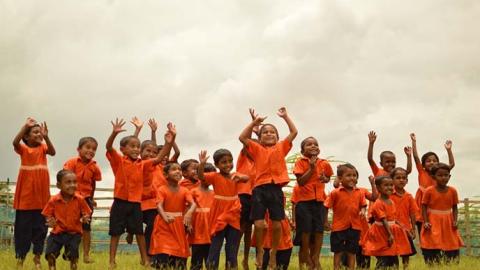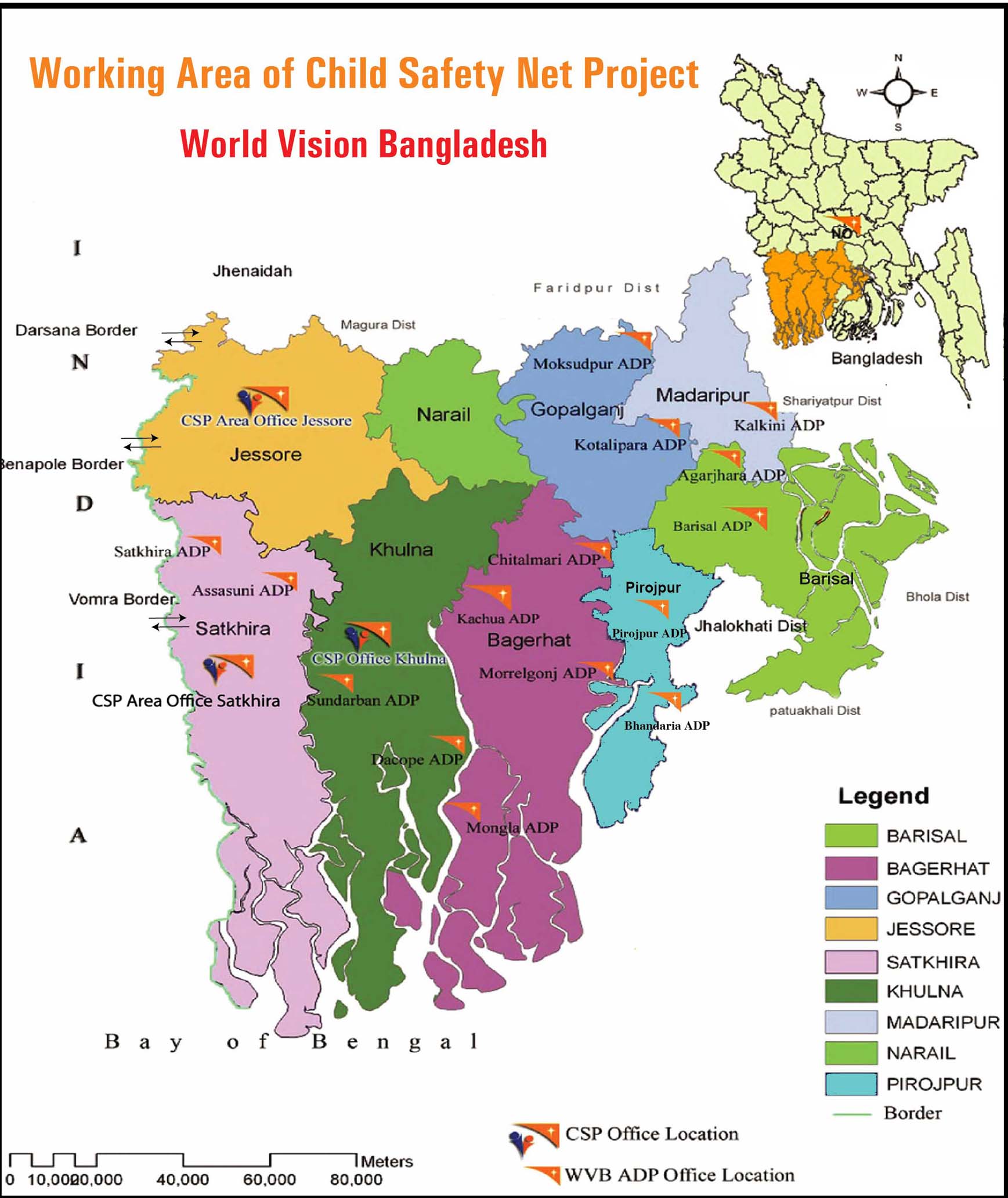
CHILD SAFETY NET PROJECT
Project Lifetime : May 2011 to September 2016
Background: Bangladesh is a source and transit country for trafficking of men, women, and children for the purposes of sexual exploitation, forced labor and abuse. Poverty, natural disasters, loss of traditional livelihoods, low status of women, lack of awareness and limited enforcement of laws contribute to the human trafficking problem.
Therefore, to reduce children’s vulnerability to trafficking, abuse and exploitation World Vision has initiated the Child Safety Net Project.The project also works for increasing rates of identification, rescue, rehabilitation, and reintegration for survivors.
Population covered: The project is covering a toal of 1,659,563 population including 278,687 boys and 605,652 girls under its program interventions. These program participants are mainly the families and children at risk of trafficking, victims of trafficking, children in current trafficking situations, local non-governmental and community-based organizations, law enforcement authorities.
Project Location: The project has been implemented in 25 Upazilas of 9 Districts under Khulna, Barisal and Dhaka Divisions.
The project mainly works in three major program areas: Prevention, protection and restoration:
a) Prevention
i)Training
The Child Safety Net Project implements a wide range of activities to tackle human trafficking, which are in line with the National Platform for Actions 2012-2014. The project emphasized prevention of trafficking by raising awareness of the community, legal practitioners, journalists, and law enforcement agencies at the local and national levels.
ii) Mass awareness
As part of its mass awareness activities, World Vision Bangladesh developed and distributed 21,500 promotional materials with anti-trafficking messages in fiscal year 2013. The project aired five video clips on trafficking, child marriage, child labor, dowry and child torture on Samay TV and Independent TV, which captured large audiences. A total of 292,070 people including 65,592 boys and 95,639 girls from vulnerable communities have been reached by Child Safety Net Project during fiscal year 2013.
The project educated 135,738 people in the community on anti-trafficking issues through video shows and group education sessions. Special classroom education sessions on anti-trafficking issues were also organized, so that the 134,746 students who participated can identify and prevent trafficking in schools and communities. At the same time, 2,787 vulnerable children were provided with Life Skills-Based Education to help them cope with challenges related to trafficking.
Child Friendly Spaces
The project operates 20 Child Friendly Spaces at hot spots to protect children from trafficking, abuse and exploitation. In 2013, the project supported 775 children, including 365 boys and 410 girls, in getting non-formal education and life skill-based education. These children mainly come from the day labourer's familiesmostly left at home unattended. In child friendly spaces children receive education assistance, day care support, and nutrition. Read a story about Child Friendly Spaces
Activation of local level committees
Responding to the National Plan of Action 2012-2014, WVB has activated 43 Counter Trafficking Committees at union, upazila and district levels in FY-2013.
Campaign on early marriage
Considering early marriage as one of the major push factors for trafficking, Child Safety Net Project launched ‘BRIDE NOT BEFORE 18’ campaign to stop child marriage. The project took a range of advocacy initiatives in collaboration with the National Human Rights Commission (NHRC), Bangladesh.
b) Protection
Establish a protection mechanism for vulnerable children by activating Counter Trafficking Committee (CTC) at different level, promoting cross-border collaboration, advocacy workshop / meeting, strengthening network, collaboration and coordination among stakeholders, training for the law enforcement agencies and GO, NGO key stakeholders and supporting the NGOs specialized in rescue. The organization also comprehensively supports trafficking victims with shelter, food, alternative livelihoods, and psycho-social counseling.
c) Restoration
World Vision Bangladesh, under the project’s restoration support scheme, offered extensive services to 64 rescued victims of trafficking since its inception. World Vision Bangladesh provided the victims with shelter, food, cloth, and psycho-social, medical and legal aid (referral) through its partner NGO Dhaka Ahsania Mission. The victims were reunited and reintegrated with their families. World Vision Bangladesh also provided income generation support to trafficking victims for their sustainable rehabilitation.
